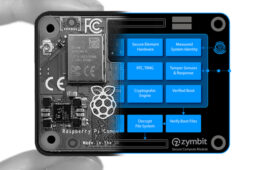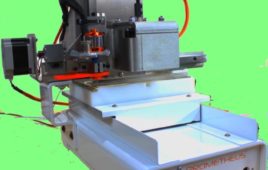The opioid addiction in the United States has grown exponentially over the past several years with more than 115 opioid related deaths per day. In 2017 alone, there were 72,000 drug-related overdose deaths with 30,000 of those deaths related to opioids. People are prescribed powerful medications every single day which can later lead to addiction without them even knowing. By late 2017, opioid addiction was declared a national public health emergency.
A team of Carnegie Mellon software engineering students has responded to this crisis through the creation of a wristband that can detect an opiate overdose. The wristband is capable of sending out alerts as well as messages to contacts, so that someone can come to their aid. Dubbed the HopeBand, students are confident that it can be a tool of hope if an intervention is needed for survival.
The HopeBand is a wrist-mounted “pulse oximetry” device capable of saving lives through alerts. The pulse oximetry sensors, “Can monitor the oxygen levels in blood by shining light from LEDs through the skin and detecting changes in light absorption. If oxygen levels drop low enough to signal possible overdose, the device monitors the situation for 10 seconds before sounding the alarm,” says Jeremy Hsu in IEEE Spectrum.
Yu-Sam Huang of Carnegie Mellon says, “You just pair the band with your smartphone so if it picks up an overdose; it will alert emergency contacts.” The sensor, when paired with a phone through Bluetooth, can take multiple readings to establish a baseline reading for the wearer. If those baseline readings change or go into the red, the phone will then send out a message along with the GPS coordinates of the person in trouble to people in their emergency contact list.
With overdoses, there is a small window of time for life-saving medication to be administered. Students at Carnegie Mellon designed the band with the goal of lowering the time before a doctor or healthcare professional could administer living saving medication to reverse the overdose. The other goal the students focused on is cost. They wanted to ensure that their product was low cost so anyone could afford it.
Initially, it was believed that the wristband would merely be proof of concept, but the project is near completion and students are already refining a prototype. The next stage for the HopeBand is the development of machine learning algorithms focused on improving prediction accuracy.
Recently, the HopeBand was awarded third place in the Robert Wood Johnson Foundation’s Opioid Challenge. As testing continues, students plan to offer the band to opioid users for free through a needle exchange program. Eventually, the team is looking to sell the HopeBand for between $16 to $20 with additional features to aid wearers in the fight against addiction.
Filed Under: Product design, Student programs




